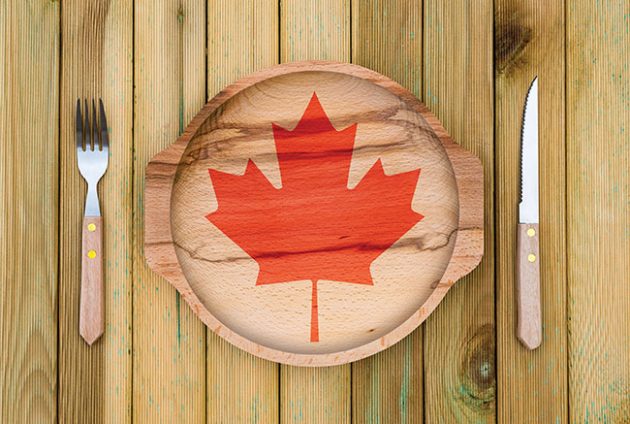
Growing appetite for food tourism
September 16, 2021
By
Bakers Journal
Canadians are hungry for local flavours and new sights
 Ontario Bakeries like Fresh Baked can engage with customers through pie trails and festivals, promoting produce from local orchards.
Photo: Jennifer McConnell of Fresh baked
Ontario Bakeries like Fresh Baked can engage with customers through pie trails and festivals, promoting produce from local orchards.
Photo: Jennifer McConnell of Fresh baked Agatha Podgorski, the Director of Communications of the Culinary Tourism Alliance (CTA), knows that autumn is the best time for taking a day trip or exploring a food festival. “Especially now in the wake of COVID, people are looking to have some experiences that engage all of your senses,” she said in an interview. As taste is linked strongly to memory, Podgorski knows that food-related memories last longer, and Canadians are ready to create some good memories out of the pandemic.
Enter food tourism: “There’s never been a better time to talk about tourism in our country, engaging businesses,” she adds. The Culinary Tourism Alliance aims to bridge the gap between food industries and travel industries by connecting them sustainably, through various initiatives. In the past, the CTA had hosted workshops and webinars on covering a variety of topics that include social media, sourcing and facilitating introductions between producers and restaurateurs.
The CTA worked with over 90 destinations across the province for their Covid Recovery program. They CTA provided training to adhere to World Travel & Tourism Council SafeTravel protocols, and created strategies to highlight BIPOC and LGBTQ+ tourism operators. All of these factors and players were very interested in connecting with food-centric travellers and consumers.
While social media certainly spurred food tourism on, it’s not a new phenomenon. Travellers list food as one of the items of main importance when planning a trip, alongside climate and scenery. “We work with destinations, governments, local food and agricultural products …to create Feast On, Food Passports and The Great Taste of Ontario (GTOO) among some programs, to make people interested.”
Feast On, is a certification program that recognizes businesses committed to sourcing and creating culinary wonders with local ingredients. For those not familiar with the Food Passports, it’s an online portal that allows a potential tourist (or local) to download one of eighty passports, and work out an itinerary to explore a bakery, confectionery or food festival.
“as a bakery, there’s a couple different things you can do if you’re committed to local sourcing, that sort of thing, based on how much money to spend.
“You can also work indirectly with us by getting to know more local food providers, that’s a huge piece of the puzzle, working with your board to meet visitor demand but also make sure they’re aware of complete business and expanded opportunities.
“We’re working with bakeries and restaurants to create a curated experience, they log in to our site, read blogs about food destinations, download a passport to either redeem those or donate them to charity. That’s the program in a nutshell. A lot of inspiration involved in bringing up stories on the bakery level, working with your DMO program, as well as other programs.”
Podgorski states that being featured on that passport means that you’re actively working with the CTA and various communities that are committed to your business and your cause that is special to your business. “There’s a lot of bakeries, involved in the travel passports,” she explains, describing the online system that promotes and inspires travellers and foodies. “In fact, we have the Apple Pie Trail, the Butter Tart Trail, The Black Foodie Guide to Black-Owned Ontario…there’s so much going on. It’s unique and kind of beautiful.”
Food tourism isn’t merely a way to pander to Millennial influencers on social media. It’s currently one of the more lucrative and entertaining industries in Canada. Chris Elliott, the Senior Economist for Restaurants Canada, stated in a Restaurants Canada panel last March: “international travelers and visitors they spend about $4.3 billion a year on food service alone.”
Podgorski also recommends that bakeries without a festival or tour to join should consider joining a neighbouring festival, or even better, start their own neighbourhood festival or tour. (The Founding Sponsor, Ardent Mills’ 2020 Inspirational Bakery contest winner was the St. Joseph Bakery, known for starting the Facer Street Festival in St. Catharines, ON.) Connecting with other businesses, ingredient suppliers or growers, and even the local BIA can all be helpful allies in organizing an eye-opening tour that shows off the area and the best work from local artisans. The easiest way many can start would be at a farmer’s market, which is often the Podgorski notes that many food tourists are looking for sustainability in their travel habits, and the food they eat, which can be a boon for local farms offering a taste of their local produce. For city bakers, sharing sourcing practices and putting up signage that indicates where ingredients come from can give both locals and tourists an idea of their food’s regionality. She identifies some of the things tourists and foodies have been looking for:
“Sourcing practices: Where do you get it, what does it mean, are you using conventional products that are sitting on shelves for years? Are you finding ways of using things grown and raised uniquely?” Podgorski says the CTA helps throw light on ways all of those little choices, that are more sustainable. But then she also suggests the baker considers transportation, “where are you sending your products? There’s so many angles.”

Canadians are ready to explore their country’s wide palate.
Photo credit: Victor Lauer/ adobe stock
Podgorski believes that the general population isn’t merely interested in food tourism simply on account of travel for the sake of new vistas. Tourists, she says, want to support food producers, from farms to bakeries as the most important people in communities. “It’s great, it’s a huge opportunity for those kinds of businesses to leverage. [Tourism] also supports businesses that aren’t necessarily struggling on the day-to-day, or are farmers and producers. You know, whether it’s a CSA or a nearby shop. So, I think, I think there’s a silver lining.”
Ontario is not the only province engaged in lively food tourism industries. Food tourism promises to meet the gap by providing travel destinations that around food. With autumn’s bright colours, Canadians are looking for an excuse to get out of the house before the weather gets colder. Events like Victoria, BC’s “Off The Eaten Track” Tours, Quebec’s Poutine Festival or The PEI Fall Flavours Festival celebrates chefs and local cuisine, and generates excitement about travel.
For a bakery to be featured, they can log in, upload photos and a story about the business. The GTOO is looking for Destination Partners who will contribute up to 3 pieces of content per season. The content can be in the form of a one-day, two-day trip or more. The website explains, “the campaign will span 6 seasons, beginning Fall 2020 and ending with Winter 2021. That means that each partner can contribute a maximum of 18 pieces of content total over the course of the campaign. That’s 18 pieces of great food content that will live on your website too.”
“We’re working with the [food destination] to create a curated experience,” explains Podgorski. “That’s the program in a nutshell. A lot of inspiration involved in bringing up stories on the bakery level, working with your DMO program, as well as other programs are also available.” Taste Ontario’s passport program currently features 1352 small businesses, and has an overall program reach of 2,009,737. Your bakery can be someone’s destination to a very special day.
ADDED FEATURE: Listen to “On The Rise” to learn how to market your bakery for food tourism. |MORE|
Print this page
Leave a Reply